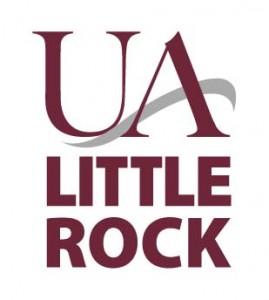As the look back to 19 cultural occurrences in 2019 continues, this entry looks at personnel and location changes.
 4. Groundbreaking for reimagined Arkansas Arts Center on first day of tenure for new executive director, Dr. Victoria Ramirez. October 1, 2019, was a red-letter day for the Arkansas Arts Center. Not only was it the first day for new executive director, Dr. Victoria Ramirez, but it was also the ground-breaking for the award-winning reimagining of the Arkansas Arts Center.
4. Groundbreaking for reimagined Arkansas Arts Center on first day of tenure for new executive director, Dr. Victoria Ramirez. October 1, 2019, was a red-letter day for the Arkansas Arts Center. Not only was it the first day for new executive director, Dr. Victoria Ramirez, but it was also the ground-breaking for the award-winning reimagining of the Arkansas Arts Center.
Dr. Ramirez was hired in August 2019 to take over the leadership of the Arkansas Arts Center. She came from the El Paso Museum of Art, where she has been Director. Previously she has worked at museums in Austin, Houston, Washington DC as well as Georgia and Virginia. Since October 1, she has hit the ground running with meetings and almost daily visits to the construction site.
In June and August 2019, the AAC paid farewell to its previous building in MacArthur Park in a series of events. In August, the staff and museum school moved to facilities in the Riverdale section of Little Rock which will be its home until the reimagined (and largely newly constructed) facility is reopened in 2022. The AAC continues to offer programming, largely in conjunction with the Central Arkansas Library System and the Clinton Presidential Center.
One last AAC note of mention: in December 2019, Bradley Anderson stepped down after FORTY years as artistic director of the Arkansas Arts Center Children’s Theatre. In his typical lowkey fashion, he eschewed a public tribute, but was feted by the staff. Mayor Frank Scott, Jr., honored him with a proclamation, as well.
 5. Philip Mann steps down as Music Director of the Arkansas Symphony Orchestra; Geoffrey Robson is Interim Music Director. After nearly a decade on the podium of the ASO, Philip Mann left the organization in May 2019. He was honored by the Board and musicians at final concerts in Robinson Center and the I.N.C. series. Associate Music Director Geoffrey Robson was named as the Interim Music Director.
5. Philip Mann steps down as Music Director of the Arkansas Symphony Orchestra; Geoffrey Robson is Interim Music Director. After nearly a decade on the podium of the ASO, Philip Mann left the organization in May 2019. He was honored by the Board and musicians at final concerts in Robinson Center and the I.N.C. series. Associate Music Director Geoffrey Robson was named as the Interim Music Director.
While he is conducting many of the concert for the ASO this season, he is sharing the podium with a variety of guest conductors. Some of the guest conductors may be candidates for the permanent post. In deference to those who would prefer to keep their interest under wraps, the ASO is conducting (pun intended) this search more privately than in previous efforts. All of the guest conductors (whether a candidate or not) are being given a chance to interact with audience members. So far, audience response to the concerts and guest conductors has been overwhelmingly positive.
The ASO has not publicly announced a timeline for naming the next permanent music director. In the meantime, Robson and Executive Director Christina Littlejohn, along with ASO Board members and staff, continue to present an aggressive concert and outreach schedule. Another ASO personnel change of note, longtime ASO supporter Ellen M. Gray was named an Honorary Lifetime Member of the ASO Board this year. She joins a very select few who have been granted this designation.
 6. A new Chancellor and new arts Dean at UA Little Rock. While not specifically a cultural institution, the University of Arkansas at Little Rock is definitely a player in the City’s arts environment. 2019 saw Dr. Christy Drale, a longtime university administrator, assuming the helm as the Chancellor of UA Little Rock. She has been a valued supporter of the university’s arts, cultural and heritage offerings throughout her tenure.
6. A new Chancellor and new arts Dean at UA Little Rock. While not specifically a cultural institution, the University of Arkansas at Little Rock is definitely a player in the City’s arts environment. 2019 saw Dr. Christy Drale, a longtime university administrator, assuming the helm as the Chancellor of UA Little Rock. She has been a valued supporter of the university’s arts, cultural and heritage offerings throughout her tenure.
While she is faced with making deep cuts at the university due to declining enrollment and the accompanying decrease in funding, it is highly unlikely that she will make knee-jerk cuts to arts funding first, which has often been the case in the past not only at this university but at many others.
Likewise, Dr. Sarah Beth Estes was permanently named Dean of Arts, Letters, and Sciences at UA Little Rock in the summer of 2019. She had previously held the position in the interim and has been a faculty member and administrator at UA Little Rock since 2006. Dean Estes has been a vocal advocate for cross-discipline collaborations within the university as well as the importance of UA Little Rock as a community asset.
 7 – Comings and Goings at UA Little Rock Public Radio. KUAR and KLRE, the public radio stations at UA Little Rock saw some personnel changes of their own this year. After leading the station as Interim General Manager for several years, Nathan Vandiver was named General Manager in December. He started at the stations in 2009 as an intern while he was a student at UA Little Rock. From 2013 to 2016, he was program manager for UA Little Rock Public Radio before assuming the title of Interim G.M. following the death of Ben Fry.
7 – Comings and Goings at UA Little Rock Public Radio. KUAR and KLRE, the public radio stations at UA Little Rock saw some personnel changes of their own this year. After leading the station as Interim General Manager for several years, Nathan Vandiver was named General Manager in December. He started at the stations in 2009 as an intern while he was a student at UA Little Rock. From 2013 to 2016, he was program manager for UA Little Rock Public Radio before assuming the title of Interim G.M. following the death of Ben Fry.
Longtime Arts Scene host Ann Nicholson retired from the station in the fall of 2019. A British national, she was raised in India, Scotland, and England. She moved to Canada in the 1950s and the US in the 1960s. She and her late husband moved to Little Rock in the 1970s, upon which she quickly ensconced herself in the arts community. In 1985, she started hosting Arts Scene on UA Little Rock Public Radio. Since then, she has interviewed hundreds of artists, musicians, authors, and performers about projects in Little Rock.
UA Little Rock reporter Daniel Breen is conducting the Arts Scene interviews now. A graduate of Little Rock Central High School and UA LIttle Rock, Breen is an avid fan of the music scene and the arts in general in Little Rock.
 The UA Little Rock Department of Art+Design is launching a new Windgate Distinguished lecture series. It will take place at 6pm tonight (January 30) in Room 101 of the Windgate Center on the UA Little Rock campus.
The UA Little Rock Department of Art+Design is launching a new Windgate Distinguished lecture series. It will take place at 6pm tonight (January 30) in Room 101 of the Windgate Center on the UA Little Rock campus.
 Though a native of Batesville (and a proud booster to this day), James L. “Skip” Rutherford has lived in Little Rock for many years. While he was a student at the University of Arkansas, he probably never envisioned the impact he would have on the cultural scene of Little Rock.
Though a native of Batesville (and a proud booster to this day), James L. “Skip” Rutherford has lived in Little Rock for many years. While he was a student at the University of Arkansas, he probably never envisioned the impact he would have on the cultural scene of Little Rock. Next Sunday is Super Bowl Sunday, so it seems to be a good time to remember the five year series of football games in Little Rock known as the Copper Bowl.
Next Sunday is Super Bowl Sunday, so it seems to be a good time to remember the five year series of football games in Little Rock known as the Copper Bowl.
 Architecture and Design Network (ADN) continues its 2019/2020 June Freeman lecture series with a lecture entitled “Borderwall as Architecure” with Virginia San Fratello, founding partner of Real San Fratello.
Architecture and Design Network (ADN) continues its 2019/2020 June Freeman lecture series with a lecture entitled “Borderwall as Architecure” with Virginia San Fratello, founding partner of Real San Fratello. 17 – A new format for ACANSA. 2019 was the Sixth Annual ACANSA Arts Festival of the South. This edition has a slightly different format taking place on three successive weekends in September.
17 – A new format for ACANSA. 2019 was the Sixth Annual ACANSA Arts Festival of the South. This edition has a slightly different format taking place on three successive weekends in September. 18 – Winthrop Rockefeller Charitable Trust gives $2.25 million to UA Little Rock Center for Arkansas History and Culture. On September 10, UA Little Rock announced that the Winthrop Rockefeller Charitable Trust (WRCT) had gifted $2.25 million to the University of Arkansas at Little Rock Center for Arkansas History and Culture to preserve and educate the public about the history of Arkansas, including the notable contributions of Gov. Winthrop Rockefeller.
18 – Winthrop Rockefeller Charitable Trust gives $2.25 million to UA Little Rock Center for Arkansas History and Culture. On September 10, UA Little Rock announced that the Winthrop Rockefeller Charitable Trust (WRCT) had gifted $2.25 million to the University of Arkansas at Little Rock Center for Arkansas History and Culture to preserve and educate the public about the history of Arkansas, including the notable contributions of Gov. Winthrop Rockefeller. 19 – Little Rock’s new Mayor, Frank Scott, Jr. January 1, 2019, marked the swearing in of Frank Scott, Jr., as Little Rock’s 73rd Mayor. Unlike any predecessor, he established a Transition Board to help set goals in a variety of subject areas. One of those areas was Quality of Life. This should not be a surprise since he is a graduate of Parkview Arts and Science Magnet School. The arts, humanities, culture and museums throughout the entirety of Little Rock have been prominent in his first-year initiatives. Additionally, he has:
19 – Little Rock’s new Mayor, Frank Scott, Jr. January 1, 2019, marked the swearing in of Frank Scott, Jr., as Little Rock’s 73rd Mayor. Unlike any predecessor, he established a Transition Board to help set goals in a variety of subject areas. One of those areas was Quality of Life. This should not be a surprise since he is a graduate of Parkview Arts and Science Magnet School. The arts, humanities, culture and museums throughout the entirety of Little Rock have been prominent in his first-year initiatives. Additionally, he has: 4.
4.  5.
5.  6.
6.